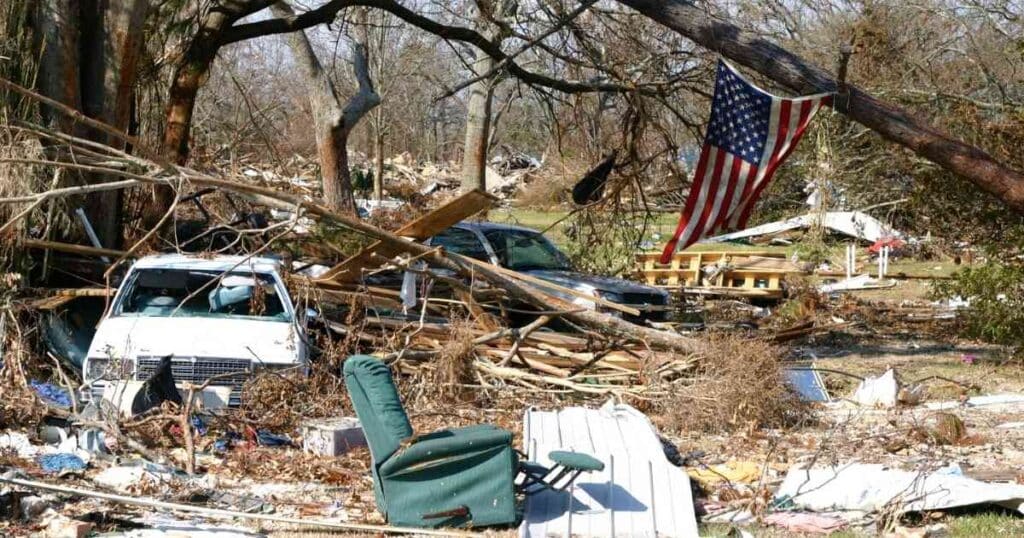If you are new to Florida or just need a refresher on the different hurricane categories, we put together a quick and easy article on how each category could affect your family and property. You can also view the video at the bottom for a visual representation of the hurricane categories. AMD Supply LLC is a leading manufacturer and distributor of approved accordion hurricane shutters in the state of Florida and Texas. Let’s learn more about the hurricane categories today.
What Do These Hurricane Categories Mean?
Our Florida hurricane season starts on June 1st and ends November 30th annually with August and September seeing most of the major hurricanes in the Atlantic Ocean over the east coast.
When it comes to stormy season in Florida, most people want to know how much rain, wind speeds, and devastating damage they can expect during a hurricane. While these hurricane categories cannot predict everything when it comes to a storm, it does give an indication about how these hurricanes will affect the property and the people that come in its path.
Here is all you need to know about the hurricane categories and the potential storm damage that may occur in Florida, Texas, and the surrounding Gulf Coast States.

Saffir-Simpson Hurricane Wind Scale
The categories of hurricanes are measured on the Saffir-Simpson Hurricane Wind Scale. It runs from Category 1 to Category 5 hurricanes. It was developed in 1970s by Robert Simpson (National Hurricane Center) and Herbert Saffir, hence named after them.
The scale has evolved a lot over time but the basics used still remain the same today with measurement of the wind speeds produced by the hurricane. The hurricane categories won’t tell you about catastrophic damage like flooding or extremely dangerous winds that will produce tornadoes but it gives an idea of the strength of the hurricane and the extensive damage that could happen to residential areas and commercial buildings.
Category 1 Hurricane
Category 1 hurricanes have a wind speed range from 74 to 95 mph and a storm surge of 4-5 feet above the mean tide. Apartments, homes, and shopping centers may experience a little damage while some power outages might occur due to snapped power lines. One of the examples of category 1 hurricane includes Hurricane Dolly in 2008 that hit southern Texas.
Category 2 Hurricane
Category 2 hurricanes will produce a wind speed range from 96- to 110 mph and storm surge of 6-8 feet above the mean high tide. Category 2 can cause extensive damage to older mobile homes. Flying debris can cause injury or death to livestock and people. Very dangerous winds will produce siding and roof damage as it’s common in this category while the residents should also expect a complete power loss as shallowly rooted trees will knock down power lines that will result in outages ranging from a few hours to days or weeks.
Category 3 Hurricane
Winds in the category 3 hurricanes range from 111-129 mph and storm surge of 9-12 feet above the mean high tide.This category brings along a high risk of damage to the properties as well as the risk of injury and even death to people, pets, and livestock. Mobile homes might be completely destroyed in this category while well-built homes and apartments will also suffer major damage. Water and electricity will likely be unavailable for several days to a few weeks. Hurricane Wilma is an example of category 3 hurricane.
Category 4 Hurricane
Hurricanes in category 4 have winds ranging from 130-156 mph and storm surge of 13-18 feet above the mean high tide. Flying debris at such a high speed poses a serious risk of injury or death while the mobile homes will also be completely destroyed. Well-built homes might also collapse while apartments might see severe damage to their roofs and upper floors. Hurricane Harvey is an example of a category 4 hurricane.
Category 5 Hurricane
This is the highest category of hurricanes with winds more than 157 mph and storm surge of 19 feet above the mean high tide. Expect a complete destruction of mobile homes while a high percentage of well-built ones will also be destroyed. Power poles and trees will also be uprooted with power outages for even months.
AMD Supply LLC
AMD Supply is the manufacturer of the Supernova Shutters, an accordion hurricane shutter system recently awarded, “Best Accordion Shutters“, in 2022 by the Spruce. Call us today at (786) 621-6706 or feel free to visit one of our six locations in Florida: Deerfield Beach, Port St. Lucie, Boynton Beach, Pensacola Government, Pensacola Palafox, Fort Myers to learn more about our hurricane protection products.


